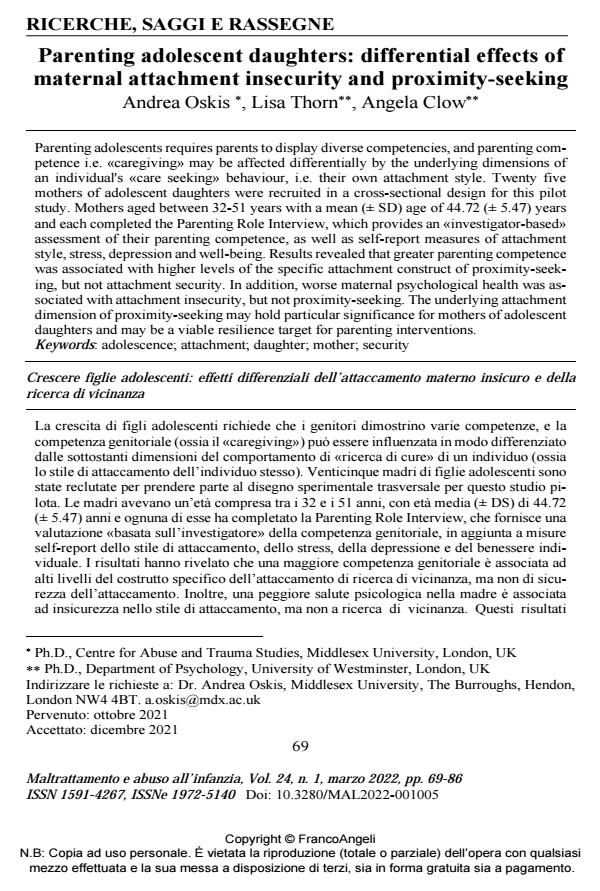Crescere figlie adolescenti: effetti differenziali dell’attaccamento materno insicuro e della ricerca di vicinanza
Journal title MALTRATTAMENTO E ABUSO ALL’INFANZIA
Author/s Andrea Oskis, Lisa Thorn, Angela Clow
Publishing Year 2022 Issue 2022/1
Language English Pages 18 P. 69-86 File size 198 KB
DOI 10.3280/MAL2022-001005
DOI is like a bar code for intellectual property: to have more infomation
click here
Below, you can see the article first page
If you want to buy this article in PDF format, you can do it, following the instructions to buy download credits

FrancoAngeli is member of Publishers International Linking Association, Inc (PILA), a not-for-profit association which run the CrossRef service enabling links to and from online scholarly content.
Parenting adolescents requires parents to display diverse competencies, and parenting competence i.e. «caregiving» may be affected differentially by the underlying dimensions of an individual's «care seeking» behaviour, i.e. their own attachment style. Twenty five mothers of adolescent daughters were recruited in a cross-sectional design for this pilot study. Mothers aged between 32-51 years with a mean (± SD) age of 44.72 (± 5.47) years and each completed the Parenting Role Interview, which provides an «investigator-based» as-sessment of their parenting competence, as well as self-report measures of attachment style, stress, depression and well-being. Results revealed that greater parenting competence was associated with higher levels of the specific attachment construct of proximity-seeking, but not attachment security. In addition, worse maternal psychological health was associated with attachment insecurity, but not proximity-seeking. The underlying attachment dimension of proximity-seeking may hold particular significance for mothers of adolescent daughters and may be a viable resilience target for parenting interventions.
Keywords: adolescenza; attaccamento; madre; figlia; genitore; sicurezza.
Andrea Oskis, Lisa Thorn, Angela Clow, Parenting adolescent daughters: differential effects of maternal attachment insecurity and proximity-seeking in "MALTRATTAMENTO E ABUSO ALL’INFANZIA" 1/2022, pp 69-86, DOI: 10.3280/MAL2022-001005